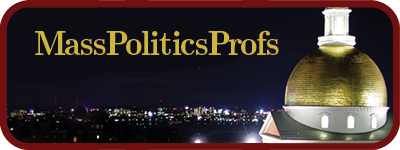I’ve been listening to the GreatSchoolsMA advocates for some rationale on why dark money is a good thing (more on this in an upcoming post) and one consistent response is to change the subject to union spending. It’s true the unions are spending millions against Question 2. But in the battle of billionaire’s dark money versus union money, not all money is created equal.
The difference here is pretty basic. Although some of the pro-2 money is transparent (Bloomberg, Waltons, several other hedge funders and a few small dollar contributors) most of it is untraceable dark money, contributed in staggering amounts by a handful of superrich individuals – perhaps fewer than ten of them (See Your Dark Money Reader). The millions in union money comes in small amounts from the dues of thousands of members. We don’t know the identities of those thousands either, but then it really doesn’t matter. As Massachusetts Common Cause wrote in its report Shining a Light: Success of the Massachusetts Disclosure Law, “Unions are funded by dues and small contributions from their members, making the identity of each donor less relevant. When each donor is small, the public interest in knowing who they are is reduced. Unions are also subject to other strict reporting requirements by the Department of Labor, as well as have rules around how their money can be raised and spent.”
Common Cause New York extended this theme in its report Polishing the Apple: Examining Political Spending in New York to Influence Education Policy:
Unions assert that their policy positions are shaped by their members, pointing to a governance structure built on representatives elected by the rank and file. Union finances, including political spending, are governed by extensive federal regulation, requiring regular and highly detailed reporting, with significant penalties for misreporting. . . .
In contrast the decision-making structure and finances of pro-privatizer organizations and foundations are opaque. Often, all that can be learned are the names of the members of their boards of directors. Through these listings, it can be discerned that these boards are primarily composed of contributors who have entered the education policy arena with a market driven agenda.
The Common Cause New York report then went into some detail to break down how large the privatizer individuals’ contributions were, compared to the many thousands of small dollar contributions by teachers. One of the most important dark money organizations in New York, as it is here, is the dark money Families for Excellent Schools.
The biggest giver to Great Schools Massachusetts is Families for Excellent Schools Advocacy, the New York based dark money front. No one really knows who finances FESA’s Massachusetts interests though you can find some reasonable inferences at Shining a Light on Families for Excellent Schools.
The Save Our Public Schools campaign is mostly funded by unions that aggregate the contributions of thousands of teachers. But how many contributors to Great Schools Massachusetts identify as teachers? If you go through the contributors at the Office of Campaign and Political Finance website you’ll see two individuals identified as retired teachers and one college professor, total contributions: sixty-five dollars ($65.00). That sum is a bit less than FESA’s infusion of six million seven hundred and fifty thousand dollars ($6,750,000.00) in dark money that keeps Great Schools Massachusetts alive.
Not all money is created equal.
Louis D. Brandeis: "We must make our choice. We may have democracy, or we may have wealth concentrated in the hands of a few, but we can't have both."
[Full disclosure: as an educator in the UMass system, I am a union member. I write about dark money, not charter schools. I've never written about charter schools, nor taken a position on them. I have taken a position against plutocracy and in favor of democracy, and thus against dark money.]

